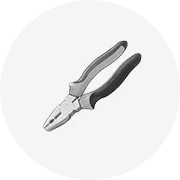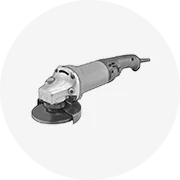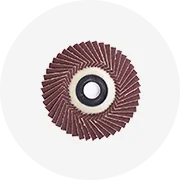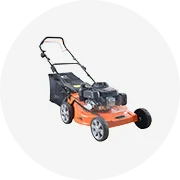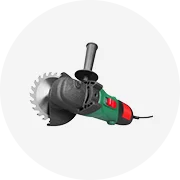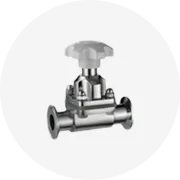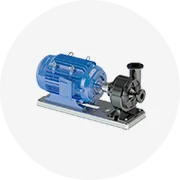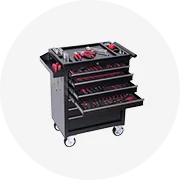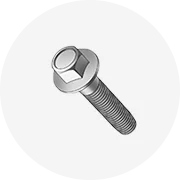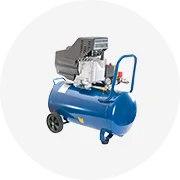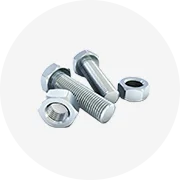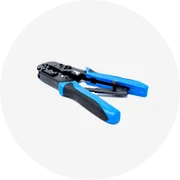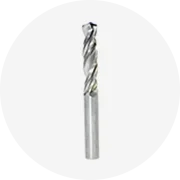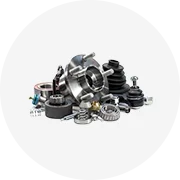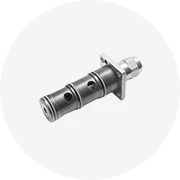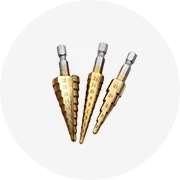Types of Marine Tow Hooks
A marine tow hook is a crucial piece of equipment for towing operations, providing a secure and reliable connection between vessels. These hooks come in various types, each designed for specific towing applications and conditions.
Standard Tow Hook
Also known as open tow hook, this widely used type features a hook-shaped metal piece with an opening at one end for easy attachment of tow lines or cables.
Best for: General marine applications, versatility
Typically constructed from stainless steel or high-strength alloy steel to withstand rigorous towing operations.
Folding Tow Hook
Specialized design that minimizes the risk of snagging or accidental disengagement during towing operations.
Best for: Safety-critical applications, crowded deck areas
Features a folding/retracting mechanism that allows the hook to close when not in use, reducing its profile.
Shark Tow Hook
A robust and heavy-duty type designed for towing larger vessels or demanding towing tasks.
Best for: High-load applications, challenging marine conditions
Inspired by shark teeth, featuring multiple sharp, angled "teeth" that enhance gripping ability in dynamic situations.
Bridle Tow Hook
Specialized type used in bridle towing systems where multiple vessels are towed in formation or alongside.
Best for: Multiple vessel towing, complex towing operations
Equipped with multiple openings or connection points, ensuring secure and distributed load during towing.
Release Tow Hook
A crucial safety component designed to allow quick and controlled release of the tow line under tension.
Best for: Emergency situations, safety-critical applications
Features remote or manual release capabilities, minimizing risk of damage to both towing and towed vessels.
| Hook Type | Primary Use | Key Features | Ideal Conditions |
|---|---|---|---|
| Standard Tow Hook | General towing | Simple open-hook design, durable construction | Calm to moderate sea conditions |
| Folding Tow Hook | Space-limited vessels | Retractable design, anti-snag properties | Crowded deck areas, multi-purpose vessels |
| Shark Tow Hook | Heavy-duty towing | Enhanced grip, high load capacity | Rough seas, large vessel towing |
| Bridle Tow Hook | Multiple vessel towing | Multiple connection points | Fleet operations, formation towing |
| Release Tow Hook | Safety-critical towing | Quick-release mechanism | Emergency situations, variable conditions |
Expert Tip: When selecting a tow hook type, consider not only your current towing needs but also any potential emergency situations. A release tow hook might be worth the additional investment for vessels frequently operating in challenging conditions.
Specifications and Maintenance of Marine Tow Hooks
Key Specifications
Made of durable and robust materials such as stainless steel, high-strength alloys, or carbon steel to withstand harsh marine environments and heavy loads during towing operations.
Each tow hook has a specific load capacity indicating the maximum weight it can safely handle. Ranges from a few tons to several dozen tons depending on size and design.
Available in various sizes to suit different vessels and towing requirements. Key dimensions include length, width, throat opening, and overall height.
May include self-latching mechanisms, reinforced tips, or angled throats to improve towing performance and safety. Some hooks feature automatic closure under load to prevent accidental disconnection.
Typically mounted on deck or other suitable vessel locations using bolts, screws, or welding. Proper mounting is critical for safe and effective towing operations.
Maintenance Requirements
To ensure safety and efficient operation, follow these maintenance practices for marine tow hooks:
| Maintenance Task | Frequency | Procedure | Importance |
|---|---|---|---|
| Regular Inspection | Before/after each use | Check for wear, damage, corrosion, or deformation | Critical - prevents failures |
| Cleaning | After each use | Remove dirt, salt deposits, and debris with appropriate cleaners | High - prevents corrosion |
| Lubrication | Monthly | Apply marine-grade lubricants to moving parts and joints | High - ensures smooth operation |
| Load Testing | Annually/after repairs | Verify hook can support rated load capacity | Critical - confirms safety |
| Documentation | Ongoing | Record all inspections, maintenance, and load testing | Medium - ensures compliance |
Safety Warning: Never use a tow hook that shows signs of significant wear, corrosion, or deformation. A failing tow hook during operations can lead to catastrophic accidents, vessel damage, or personal injury.
How to Choose Marine Tow Hooks
Selecting the right tow hook for your specific marine application involves careful consideration of several critical factors. Making an informed choice ensures safety, efficiency, and longevity.
- Load Capacity: Select a tow hook with a higher load capacity than the weight of the load being towed. This safety margin prevents hook failure or damage during towing operations. Industry best practice recommends at least a 25% safety margin.
- Material: Consider the material construction based on your towing needs. High-strength steel hooks offer superior durability for heavy-duty towing, while aluminum hooks provide lightweight handling and excellent corrosion resistance for recreational use.
- Corrosion Resistance: Marine environments are particularly harsh on metal components. Select hooks with protective coatings such as galvanization, epoxy, or marine-grade stainless steel construction for extended service life in saltwater environments.
- Ergonomics: The hook design should facilitate easy connection and release operations, even in challenging conditions. Consider hooks with comfortable grips and designs compatible with your specific towing ropes or straps.
- Type of Tow Hook: Different towing operations require specific hook designs. Match the hook type to your primary towing application, whether recreational, commercial, or emergency rescue operations.
- Brand Reputation: Established manufacturers with proven track records typically offer superior quality, reliability, and compliance with marine safety standards. Research brand reviews and certifications before purchasing.
- Price and Value: While budget considerations are important, prioritize quality and safety over cost savings. Compare features, warranties, and specifications to determine the best value rather than focusing solely on the lowest price.
Recreational Use
For leisure vessels and light towing operations:
- Medium-duty standard or folding hooks
- Corrosion-resistant materials
- User-friendly operation
- Load capacity: 500-2000 lbs
Commercial Use
For professional marine operations:
- Heavy-duty shark or release hooks
- High-strength steel construction
- Advanced safety features
- Load capacity: 2000-20,000+ lbs
Rescue Operations
For emergency and safety vessels:
- Quick-release mechanisms
- All-weather reliability
- High visibility markings
- Versatile connection options
Expert Advice: When calculating required load capacity, factor in not just the vessel's static weight but also dynamic forces created by waves, wind, and current. These can significantly increase the actual load on a tow hook during operations.
How to DIY and Replace Marine Tow Hooks
Replacing a marine tow hook can be a straightforward process when following proper procedures. Always refer to the manufacturer's specific instructions for your model, but these general steps will guide you through a safe and effective installation.
Ensure all safety precautions are taken before beginning work. Wear appropriate safety gear including gloves and eye protection. Verify the towing system is completely disengaged and not under any load during the installation process.
Choose a replacement tow hook that matches or exceeds the specifications of the original hook. Ensure compatibility with your vessel's towing system and verify the load capacity is appropriate for your towing needs.
Carefully disconnect and remove the existing tow hook from the towing system. Depending on the installation type, this may require removing bolts, screws, pins, or cutting through welds. Document the original installation configuration for reference.
Thoroughly clean the mounting surface where the new tow hook will be installed. Remove all debris, rust, old adhesive, or corrosion. For optimal results, use a wire brush followed by a marine-grade cleaner or solvent.
Position the new tow hook in the designated mounting location. Ensure proper alignment and orientation according to manufacturer specifications. For bolted installations, apply marine-grade thread locker to prevent loosening from vibration.
Use appropriate marine-grade fasteners (bolts, screws, or pins) to secure the tow hook. Tighten all fasteners to the recommended torque specifications using a calibrated torque wrench to prevent over or under-tightening.
Carefully attach the towing lines or cables to the newly installed tow hook. Verify all connections are secure and adjust to the appropriate length according to your vessel's towing requirements.
Before operational use, conduct a comprehensive safety inspection. Verify all fasteners are properly secured, moving parts operate smoothly, and the entire towing system functions as designed without any interference.
Conduct an initial test of the new tow hook under controlled conditions with minimal load. Monitor for any unusual movements, sounds, or performance issues during the test operation before proceeding to full-load towing.
Important Safety Notice: If you're unsure about any aspect of the installation process, consult a marine professional. Improper installation can lead to tow hook failure, which may result in serious accidents, vessel damage, or personal injury.
Maintenance Reminder: After installation, establish a regular maintenance schedule for your new tow hook. Document the installation date and keep records of all subsequent inspections and maintenance activities.
Frequently Asked Questions
A: Proper maintenance of marine tow hooks involves several key practices:
- Perform regular inspections to identify wear, damage, or corrosion before they become safety hazards
- Clean thoroughly after every use, especially after exposure to saltwater environments
- Apply appropriate marine-grade lubricant to all moving parts to reduce friction and wear
- Use the hook only for its intended purpose and strictly within safe working load limits
- Replace worn or damaged components promptly rather than waiting for complete failure
Following these practices will significantly extend the service life of your tow hook and ensure reliable operation when needed.
A: Yes, marine tow hooks can be used in challenging conditions such as heavy currents or rough seas, but additional precautions are essential:
- Select a tow hook with a significantly higher load rating than would be required in calm conditions
- Use tow hooks specifically designed for dynamic loading situations, such as shark tow hooks
- Conduct comprehensive pre-towing inspections of all equipment
- Plan towing operations carefully, considering weather forecasts and sea conditions
- Monitor the towing equipment continuously during operations for signs of stress or failure
For extreme conditions, specialized equipment and professional expertise may be required to ensure safe towing operations.
A: Despite serving similar functions in marine towing operations, tow hooks and tow rings have distinct design differences:
| Feature | Tow Hook | Tow Ring |
|---|---|---|
| Design | J-shaped with open end for quick attachment | Fully enclosed circular metal ring |
| Attachment Method | Quick connect/disconnect | Requires threading through or shackle connection |
| Security | May need safety latch to prevent accidental release | Generally more secure with no risk of slipping out |
| Typical Use | Situations requiring frequent connect/disconnect | Applications needing maximum security |
In many advanced towing systems, both components are used together: tow rings provide secure attachment points, while tow hooks offer convenient connection options for towing lines.
A: Yes, marine tow hooks can be used for recreational towing activities like water skiing, wakeboarding, or tubing, but with important considerations:
- Select a tow hook specifically rated and designed for recreational water sports use
- Ensure the tow hook is properly mounted at the correct height and position on the vessel
- Check that the hook includes appropriate safety features such as a protective covering or safety latch
- Verify the hook's compatibility with recreational towing ropes and harnesses
- Follow all manufacturer guidelines and local regulations regarding recreational towing
For dedicated water sports boats, purpose-built tow points or specialized tow pylons may offer superior performance and safety compared to standard marine tow hooks.












































